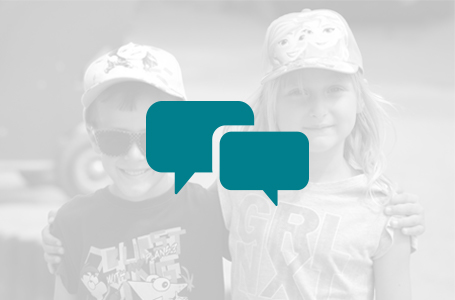
By Diane Kelly Andreou, PhD
Dr. Diane Kelly Andreou is a clinical psychologist and director of the Behavioral Health Clinic at Boys Town South Florida. She is also the mother of an adolescent. She’s highly invested in providing quality interventions to ensure today’s kids are successful adults.
Our children and adolescents are facing a mental health crisis. They are getting less sleep and physical activity and spending less in-person time with friends than previous generations. A pandemic has intensified these factors. Mental health during childhood and adolescence includes reaching developmental milestones, developing social skills, learning to regulate emotions, achieving in school, and learning how to cope with challenges. Mental and behavioral disorders cause distress and can significantly change behavior, how learning occurs, and how emotions are handled.
Creating a community-based model for resilience is a huge undertaking. Here are a few lessons we have learned so far through the MBRC:
• Afraid to be away from parents, excessive crying or worry when thinking about separation, and fears about parent health or safety
• Having extreme fear about a specific thing or situation
• Being afraid of school or situations where there are people
• Having many worries, such as the future, school, or that bad things will happen
• Repeated episodes of sudden intense fear and physical symptoms such as trouble breathing, heart pounding, dizzy, shaky, or sweaty.
Many children do not have the words to talk about their anxiety symptoms. Fear or worries may show up as trouble sleeping or going to bed by themselves, fatigue, irritable/cranky mood, difficulty concentrating, school refusal, or stomach or head pain. Many anxious children are quiet, compliant, and eager to please others. Anxiety can benefit from behavioral and cognitive behavioral therapy.
Another common disorder in childhood is Attention-Deficit Hyperactivity Disorder (ADHD). This is a persistent pattern of behaviors that interfere with development or functioning across settings, such as home and school. Often, children with ADHD have other concerns, like speech/language delays, poor handwriting, social rejection, and difficulties learning. Inattentive symptoms include careless mistakes, difficulty sustaining attention, lack of follow through, avoiding tasks involving sustained mental effort, losing things necessary for tasks, and distractibility. Hyperactive/impulsive behaviors include fidgeting, leaving seat often, talking excessively, blurting out answers, difficulty waiting turn, and interrupting. ADHD can benefit from behavior management strategies at home and behavior interventions and accommodations at school. Often, behavioral intervention is paired with medication.
Almost everyone has variations in mood. Many may experience sadness with losses or setbacks. Depression interferes with the ability to sleep, eat, and manage daily responsibilities at home, school, or work. It can happen at any age, but often first occurs in the teens or early 20s.
For children and adolescents, the following behaviors may be symptoms:
• Persistently (2+ weeks) feels sad, irritable, or hopeless
• Is uninterested in doing things previously enjoyed
• Changes in appetite (loss of appetite or eating too much) or not making expected weight gains
• Sleeping too much or not able to sleep
• Changes in energy level-fatigue, sluggish, tense, restless
• Feeling worthless or guilty
• Difficulty concentrating, paying attention, making decisions
• Recurrent thoughts of death or dying
• Self-injury or self-destructive behavior
Severe depression can lead a child or adolescent to think about suicide. Sadness is not always observed by others. Irritability, withdrawal, and lack of motivation may be more obvious. Interventions help with mood and distress, manage eating, sleep, and activity, and improve social support.
Suicide is the second leading cause of death from early adolescence through young adulthood and most who attempt suicide have shown early warning signs prior to their attempt. Signs include:
• Making threats directly or indirectly. Spoken, texted, or posted. Take statements like “I’m going to kill myself” seriously, even if someone claims to be joking or “didn’t mean it.” Passive statements like “you would be better off without me” are also to be taken seriously.
• A previous attempt. The risk of another attempt is significantly greater in the year following an attempt.
• Changes in behavior. Preoccupation with death, lack of interest in activities, lethargy, eating and sleeping patterns, and withdrawal.
• Depression often presents as irritability rather than sadness.
• Planning for death or having a defined plan. Gaining access to a means of completing suicide. Giving away possessions. Sudden, brief energy and high spirits once someone feels they have peace or comfort in their plan.
• Suicide contagion. There is evidence that media coverage of suicide leads to increased rate of subsequent suicides. Factors like repetitive reporting, sensationalizing the suicide with excessive details and pictures, and glorifying the positive side of the suicide (sadly, including the person’s positive traits) can increase the risk.
Without early diagnosis and treatment, children with mental health disorders can have problems at home, in school, and in forming relationships. These problems can continue into adulthood. Treatment in childhood or adolescence can prevent more severe or long-lasting problems.
Dr. Diane Kelly Andreou is a clinical psychologist and director of the Behavioral Health Clinic at Boys Town South Florida. She is also the mother of an adolescent. She’s highly invested in providing quality interventions to ensure today’s kids are successful adults.
